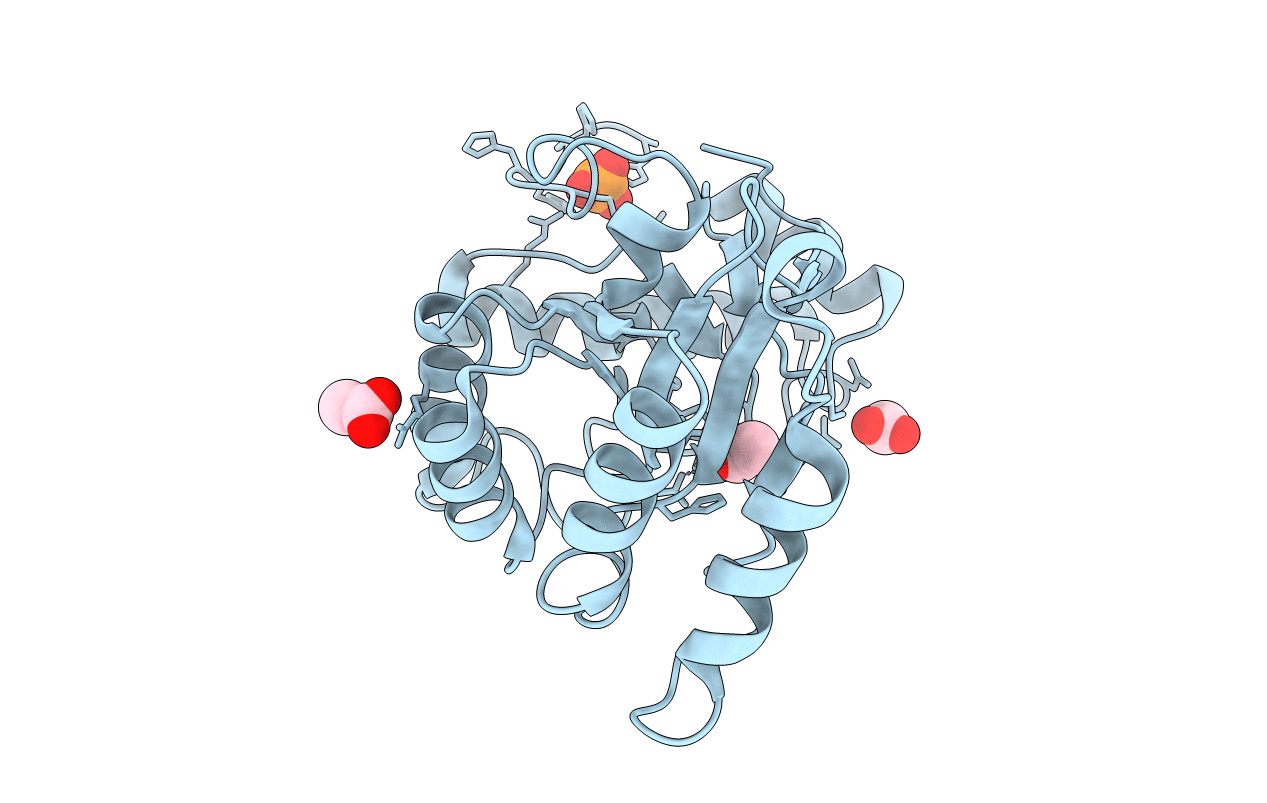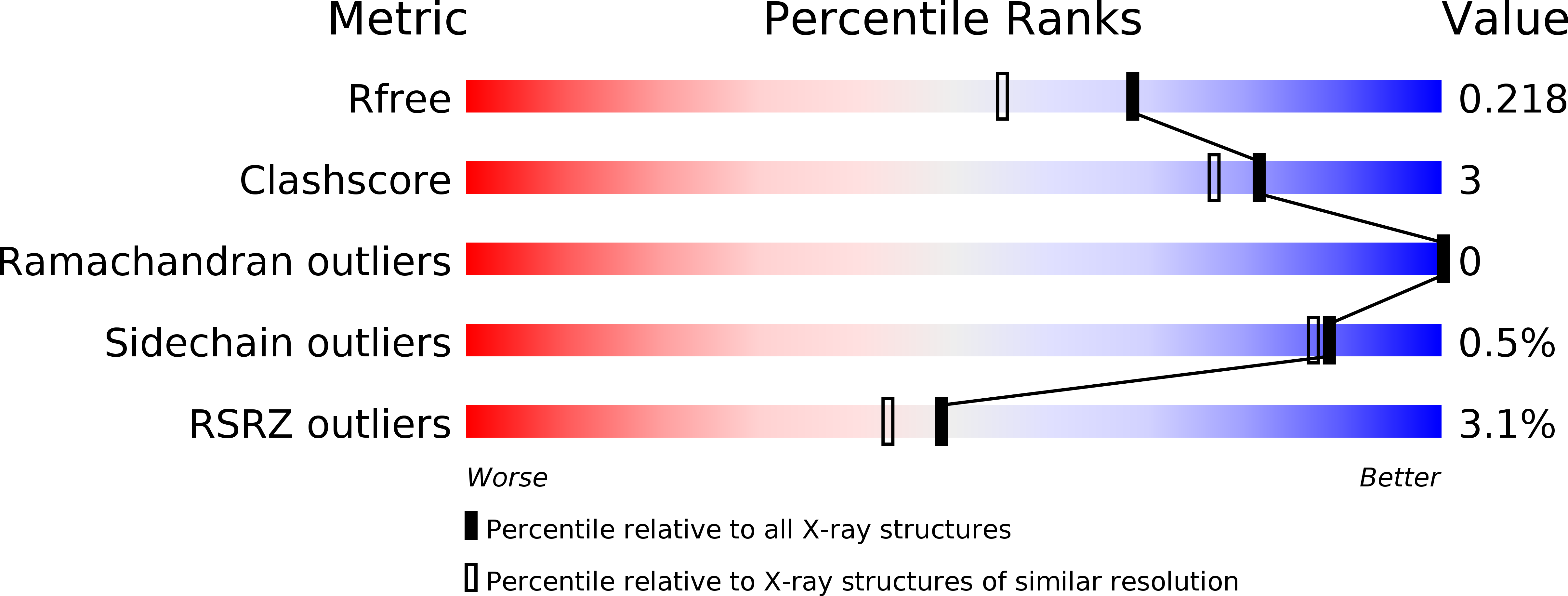
Deposition Date
2006-06-23
Release Date
2006-07-04
Last Version Date
2024-10-09
Entry Detail
PDB ID:
2IW0
Keywords:
Title:
Structure of the chitin deacetylase from the fungal pathogen Colletotrichum lindemuthianum
Biological Source:
Source Organism:
COLLETOTRICHUM LINDEMUTHIANUM (Taxon ID: 290576)
Host Organism:
Method Details:
Experimental Method:
Resolution:
1.81 Å
R-Value Free:
0.21
R-Value Work:
0.17
R-Value Observed:
0.17
Space Group:
P 21 21 2


